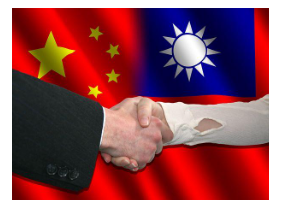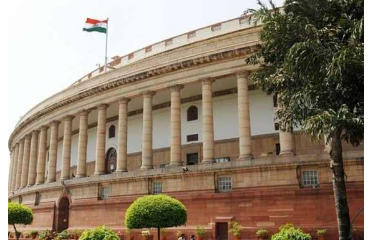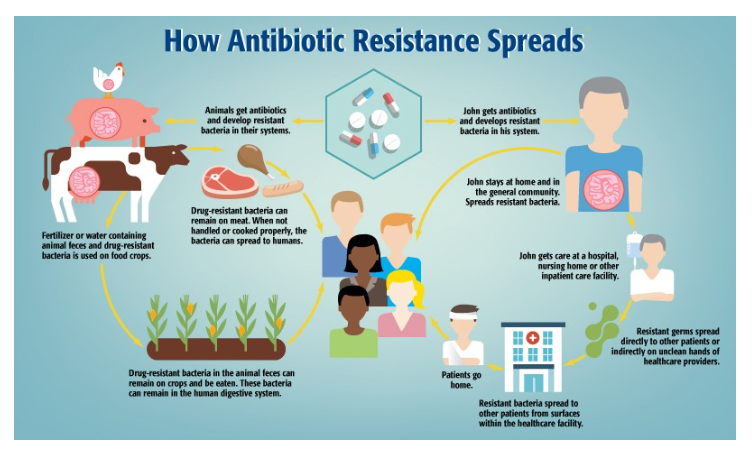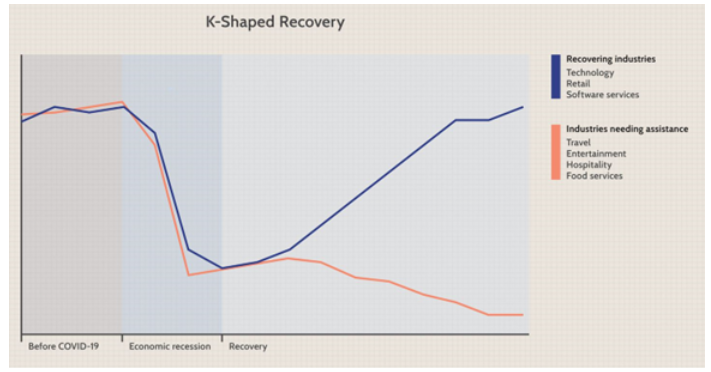Monday, 15th January 2024
SC Rejects Stay on Law Excluding CJI from CEC, EC Panel
In News: Supreme Court Denies Stay on Law Excluding CJI from CEC, EC Panel.
Introduction to the New Law
- Replacing the 1991 Act
- The CEC and Other ECs (Appointment, Conditions of Service and Term of Office) Act 2023 replaced the Election Commission (Conditions of Service of ECs and Transaction of Business) Act 1991.
- The 1991 Act governed the appointment, salary, and removal of the CEC and ECs.
- Appointment Process Under the New Law
- The President appoints the CEC and ECs based on the recommendation of a Selection Committee.
- The Selection Committee includes the Prime Minister, a Union Cabinet Minister, and the Leader of Opposition or the leader of the largest opposition party in the Lok Sabha.
- A Search Committee, headed by the Union Law Secretary, proposes a panel of names to the Selection Committee.
- Salary and Legal Authority
- The salary of the CEC and ECs is now equivalent to that of Judges of the Supreme Court.
- Orders passed by the CEC or ECs are not subject to challenge in any court of law.
Background Leading to the New Law
- Constitutional Provision and Previous Practice
- Article 324 of the Indian Constitution specifies that the appointment of CEC and ECs is subject to Parliamentary law.
- Parliament had not enacted a specific law until the introduction of the new law in 2023.
- Previously, appointments were made based on the Prime Minister's recommendations.
- Supreme Court's Intervention
- In the Anoop Baranwal v. Union of India case in 2023, a Constitution Bench of the Supreme Court directed changes to ensure the independence of Election Commission appointments.
- A committee comprising the PM, Leader of the Opposition, and CJI was formed to advise the President until Parliament enacts a separate law.
Challenges to the New Law
- Violation of SC Ruling
- Petitioners argued that the new law contradicts the SC ruling in the Anoop Baranwal case, restricting government powers in CEC and EC appointments.
- Exclusion of the CJI from the selection panel lacks an "independent mechanism," violating the principle of free and fair elections.
- Concerns about Fairness and Transparency
- Transparency in the appointment process is crucial for the functioning of the Election Commission, impacting governance and democracy.
- Allegations of the new law being against the concept of separation of powers, a constitutional basic structure upheld by the SC in the past.
Source: IE
China – Taiwan Relations
In News: Taiwan's upcoming elections for President and legislature carry significant importance due to its complex ties with China and increasing global tensions.

China-Taiwan Dispute: Historical Overview
- Early Records and Qing Dynasty Rule
- Chinese records mention the island in AD239 during an imperial expedition.
- Beijing uses this evidence to support its territorial claim.
- After a period as a Dutch colony (1624-1661), Taiwan was administered by China's Qing dynasty from 1683 to 1895.
- Japan's Control and World War Two Impact
- In 1895, Japan acquired Taiwan from China after winning the First Sino-Japanese War.
- Japan surrendered control of Taiwan after World War Two.
- Chinese Civil War and Kuomintang Rule
- The Chinese Nationalist Party (Kuomintang, KMT) led Taiwan post-Japan's surrender.
- Chiang Kai-shek ruled the KMT.
- The Chinese Civil War erupted immediately after Japan’s surrender.
- Chiang and the KMT government fled to Taiwan in 1949.
- Dispute and Divergent Views
- China claims Taiwan as a breakaway province, vowing to retake it, even by force.
- China pushes for international use of "Chinese Taipei" to prevent recognition of Taiwan as a sovereign state.
- Taiwan asserts its sovereignty with its own constitution, elected leaders, and participation in international events.
International Recognition of Taiwan
- Historical UN Representation
- Initially, Chiang Kai-shek's Republic of China (ROC) government held China's UN Security Council seat.
- During the Cold War, Taiwan became a crucial US ally, assuming China’s UN Security Council seat.
- Shift in US Recognition
- In 1979, the US shifted recognition from Taipei to Beijing, supporting the 'one China' theory.
- The US maintains close ties with Taiwan despite its official recognition of Beijing's stance.
- Diplomatic Isolation
- Over time, the number of countries diplomatically recognizing the ROC government has significantly reduced to about 15.
India-Taiwan Relations
- Absence of Formal Diplomatic Ties
- India lacks formal diplomatic relations with Taiwan.
- Commercial ties are maintained, aligning with global practices.
- India-Taipei Association (ITA)
- Established in 1995, ITA in Taipei fosters business, tourism, and cultural exchanges.
- Authorized to provide consular and passport services.
- Taipei Economic and Cultural Centre in Delhi
- In 1995, Taiwan set up the Taipei Economic and Cultural Centre in Delhi.
- Enhances cultural and economic engagement between India and Taiwan.
Source: IE
Project Tiger
In News: The tiger conservation initiative has developed over time, leading to the creation of 55 Tiger Reserves and the enforcement of essential wildlife protection laws.

Shortcomings in Tiger Conservation
- Wildlife Protection (Amendment) Act, 2006
- The Act didn’t prohibit the diversion of a “tiger’s forest” for development projects.
- It allowed wildlife to be killed if they posed a threat to human lives.
- Notification of Critical Tiger Habitats (CTHs)
- NTCA ordered Chief Wildlife Wardens to propose CTHs within 13 days, resulting in the notification of 26 Tiger Reserves.
- Similipal, Odisha lacked a Buffer Area in its CTHs until 2012, following a Supreme Court directive.
- Ineffective Approaches
- The Tiger Task Force found using guns, guards, and fences ineffective.
- Growing conflict between forest bureaucracy and locals posed a threat to tigers.
Initiatives for Tiger Conservation
- Project Tiger
- Launched in 1973 to ensure tiger survival.
- Started with 9 reserves, now has 55 covering 78,135.956 sq. km.
- Shifted from unreliable pug-mark to camera-trap census methods.
- Wildlife (Protection) Act, 1972
- Provides a legal framework for wildlife protection.
- Established National Parks and Wildlife Sanctuaries.
- Introduction of Critical Tiger Habitats (CTHs).
- Amendment in 2006 led to the creation of NTCA and a comprehensive conservation plan.
- Tiger Task Force
- Formed in 2005 to reassess tiger conservation strategies.
- Identified flaws in the dependence on weapons, guards, and fences.
- Recognition of Forest Rights Act, 2006
- Recognized customary forest rights.
- Empowered Gram Sabhas to manage forest resources democratically.
- Introduced Critical Wildlife Habitat (CWH) similar to CTH.
- Critical Wildlife Habitat (CWH)
- Introduced by Forest Rights Act (FRA).
- Gram Sabhas have authority over CWH, safeguarding biodiversity.
Conclusion
- Evolution from Project Tiger in 1973 to NTCA in 2006 reflects India's commitment.
- Integration of community empowerment, forest rights recognition, and nuanced wildlife protection showcases a holistic approach to conservation.
|
UPSC Previous Year Questions Prelims (2021) Q. At the national level, which ministry is the nodal agency to ensure effective implementation of the Scheduled Tribes and Other Traditional Forest Dwellers (Recognition of Forest Rights) Act, 2006? (a) Ministry of Environment, Forest and Climate Change Ans: (d) Prelims (2018) Q2. Consider the following statements:
Which of the statements given above is/are correct? (a) 1 and 2 only Ans: (a) |
Source: TH
Pradhan Mantri Anusuchit Jaati Abhuyday Yojana
In News: The Ministry of Social Justice and Empowerment highlights that Pradhan Mantri Anusuchit Jaati Abhuyday Yojana (PM-AJAY) consolidates three Centrally Sponsored Schemes: Pradhan Mantri Adarsh Gram Yojana (PMAGY), Special Central Assistance to Scheduled Castes Sub Plan (SCA to SCSP), and Babu Jagjivan Ram Chhatrawas Yojana (BJRCY).
Key Highlights of PM-AJAY
- Objectives
- Reduce poverty in SC communities through skill development, income-generating schemes, and other initiatives.
- Increase literacy and enrollment of SCs in schools and higher educational institutions.
- Components of PM-AJAY
- Development of SC-Dominated Villages
- Formerly known as Pradhan Mantri AdarshGram Yojana (PMAGY).
- Aims for integrated development of SC-majority villages.
- Infrastructure development for socio-economic needs.
- 'Grants-in-aid' for District/State-level Projects
- Formerly Special Central Assistance to Scheduled Caste Sub Plan.
- Supports comprehensive livelihood projects, skill development, and infrastructure.
- Focus on sustainable income and social advancement for SCs.
- Development of SC-Dominated Villages
- Construction of Hostels in Higher Educational Institutions
- Aims to reduce dropout rates and promote quality education for SC students.
- Cost norms based on geographical regions.
- 100% Central assistance for boys' hostels.
- Achievements
- Development of SC-Dominated Villages
- 1834 villages declared as Adarsh Gram during FY 2023-24.
- 'Grants-in-aid' for District/State-level Projects
- Perspective plan for 17 states approved during FY 2023-24.
- Development of SC-Dominated Villages
- Construction of Hostels in Higher Educational Institutions
- 15 new hostels sanctioned during FY 2023-24.
- Special Provisions
- Up to 15% of grants exclusively for viable income-generating schemes for SC women.
- Up to 30% of grants for infrastructure development.
- At least 10% of funds allocated for skill development.
- Promotion of SC Women Cooperatives in the production and marketing of consumer goods and services.
|
UPSC Previous Year Questions Mains (2014) Q. In 2001, RGI stated that Dalits who converted to Islam or Christianity are not a single ethnic group as they belong to different caste groups. Therefore, they cannot be included in the list of Scheduled Castes (SC) as per Clause (2) of Article 341, which requires a single ethnic group for inclusion. Mains (2018) Q. Whether the National Commission for Scheduled Castes (NCSC) can enforce the implementation of constitutional reservation for the Scheduled Castes in the religious minority institutions? Examine. |
Source: PIB
Cervical Cancer - Edukemy Current Affairs
In News: The Indian Government plans to launch a three-phase vaccination campaign targeting girls aged 9-14 to combat the risk of cervical cancer associated with human papillomavirus (HPV).
Cervical Cancer Overview
- About Cervical Cancer
- Cervical cancer occurs in a woman's cervix and ranks as the 4th most common cancer globally and the 2nd most common in India.
- India bears the largest burden of global cervical cancer cases, contributing to nearly 1 in 4 deaths worldwide, as per The Lancet study.
- Global Impact and Causes
- Almost all cervical cancer cases (99%) are linked to high-risk Human Papillomavirus (HPV) infection, a common virus transmitted through sexual contact.
- Effective primary prevention through HPV vaccination and secondary prevention via screening and treating precancerous lesions can prevent the majority of cervical cancer cases.
- Treatability and Diagnosis
- When diagnosed early, cervical cancer is highly treatable, making early detection and effective management crucial.
- India accounts for approximately 20% of the global burden, witnessing about 1.25 lakh cases and 75,000 deaths annually.
- Strains and Oncogenic Types
- Persistent infections with high-risk HPV strains contribute to almost 85% of all cervical cancers.
- At least 14 oncogenic HPV types have been identified, with types 16 and 18 being the most culpable, responsible for around 70% of global cervical cancer cases.
|
UPSC Previous Year Questions Prelims (2016) Q. ‘Mission Indradhanush’ launched by the Government of India pertains to (a) immunization of children and pregnant women Ans: (a) Exp:
|
Source: IE
Eucalyptus Snout Beetle
In News: Scientists have recently discovered a natural solution to safeguard eucalyptus forest plantations from the eucalyptus snout beetle.

About Eucalyptus Snout Beetle
- The Eucalyptus snout beetle (Gonipterus platensis) is a leaf-feeding beetle recognized as a significant defoliator of eucalypts, particularly damaging their growth and causing substantial losses globally.
- Indigenous to Australia, the beetle is found in many countries where eucalypts are cultivated, posing a threat due to its widespread distribution facilitated by the transport of forest products.
- The beetle's feeding on eucalypt leaves, buds, and shoots leads to stunted growth, deflation, and considerable damage over extensive areas.
- Recent research has focused on utilizing fungi to control the Eucalyptus snout beetle, specifically collecting fungi from naturally infected beetles in eucalyptus forest plantations.
- The identified fungi, belonging to the genera Beauveria and Metarhizium, are known for their ability to infect and kill insects, with Beauveria pseudobassiana and Metarhizium brunneum proving to be the most virulent.
- Beauveria bassiana demonstrated high effectiveness, achieving a mortality rate of 100% through both contact and ingestion.
- These fungi hold the potential to develop a bio-pesticide for sustainable forestry practices, integrating pest management strategies.
- The fungi's development involves assessing insecticidal activity, UV-B radiation tolerance, and other parameters to ensure suitability for bio-insecticide production, mass production, and commercialization.
|
UPSC Previous Year Questions Prelims (2013) Q. Consider the following organisms:
Which of the above is/are used as biofertilizer/biofertilizers? (a) 1 and 2 Ans: (b)
Q. Lichens, which are capable of initiating ecological succession even on a bare rock, are actually a symbiotic association of (2014) (a) algae and bacteria Ans: (b)
|
Source: DTE
BS-VI Norms
In News: The Supreme Court has issued a directive to the Union government, urging the formulation of a national policy aimed at gradually eliminating heavy-duty diesel vehicles
About BS-VI Norms
- Bharat Stage (BS) emission standards are government regulations controlling air pollutant emissions from internal combustion engines, covering motor vehicles and spark-ignition engine equipment.
- Adopted by India in 2000, these standards are modeled after European Union norms, with iterations like India 2000, BS2 (2005), BS3 (2010), and BS4 (2017), each imposing stricter emission standards.
- Regulating tailpipe emissions of pollutants such as particulate matter, SOx, NOx, carbon monoxide, hydrocarbons, and methane, BS standards are set by the Central Pollution Control Board under the Ministry of Environment, Forests, and Climate Change.
- In April 2020, India transitioned from BS-IV to BS-VI, mandating the manufacturing, selling, and registration of only BS-VI vehicles from April 1, 2020, encompassing cars, trucks, buses, three-wheelers, and two-wheelers.
- BS-VI norms, unlike BS-IV, do not cover off-highway equipment and vehicles like tractors and excavators.
- The key distinction between BS-IV and BS-VI lies in the stringency of emission standards, with BS-VI being more rigorous.
- The primary difference is the reduction in sulfur content in fuel, dropping from 50 ppm in BS-IV to 10 ppm in BS-VI for both gasoline and diesel, resulting in BS-VI engines emitting fewer harmful pollutants.
Source: HT
Krishnarajasagar (KRS) Dam
In News: The High Court of Karnataka has recently issued a ban on all forms of mining and quarrying activities within a 20-km radius of the historic Krishnarajasagar (KRS) dam in Mandya district.

About Krishnarajasagar (KRS) Dam
- Location: Krishna Raja Sagara (KRS) Dam
- Situated below the confluence of the Kaveri river with its tributaries Hemavati and Lakshmana Tirtha.
- Located in the district of Mandya in Karnataka.
- History of KRS Dam
- Constructed during the rule of Maharaja Krishnaraja Wadiyar IV of Mysore.
- Construction initiated in 1911 and completed in 1931.
- Designed by the renowned Indian engineer Sir M. Visvesvaraya.
- Beautification credit goes to Sir Mirza Ismail, the then Dewan of the princely State of Mysore.
- Usage and Impact
- Provides water for irrigation in Mysore and Mandya.
- Primary source of drinking water for Mysore, Mandya, and Bengaluru.
- Ensures power supply to the Shivanasamudra hydroelectric power station.
- Releases water into Tamil Nadu, stored in the Mettur dam in the Salem district.
- Structural Features
- Constructed with surki mortar and limestone.
- Length of 2,621 meters (8,600 feet) and height of 40 meters (130 feet).
- Reservoir spans about 130 sq. km, once the largest in Asia.
- Pioneered the use of automated crest gates.
- Brindavan Gardens
- Ornamental garden attached to the dam.
- Designed in the Mughal style, inspired by the Shalimar Gardens of Kashmir.
- Architectural Contributors
- Designed by Sir M. Visvesvaraya.
- Beautification by Sir Mirza Ismail.
Source: TH
Classical Language
In News: The Chief Minister of West Bengal has recently appealed to the central government, urging the inclusion of 'Bengali' as a classical language.
Classical Language Criteria
- Criteria for Declaration
- High Antiquity
- Early texts or recorded history spanning 1500-2000 years.
- Ancient Literature
- Possession of a valuable heritage in the form of a body of ancient literature or texts cherished by generations.
- Original Literary Tradition
- The literary tradition should be original, not borrowed from another speech community.
- Distinct Classical Identity
- Distinctiveness between classical language and literature compared to modern forms or offshoots, allowing for potential discontinuity.
- High Antiquity
Currently Recognized Classical Languages
- Tamil (Declared in 2004)
- Sanskrit (2005)
- Kannada (2008)
- Telugu (2008)
- Malayalam (2013)
- Odia (2014)
Benefits of Classical Language Status
- International Recognition
- Eligibility for two major annual international awards for scholars in classical Indian languages.
- Academic Focus
- Establishment of a Center of Excellence for studies in Classical Languages.
- Academic Chairs
- Request to the University Grants Commission to create Professional Chairs for Classical Languages in Central Universities.
Key Facts about Bengali Language
- Official Status
- Official language of West Bengal.
- Global Significance
- Second most spoken language in India and seventh most spoken language globally.
- Cultural Heritage
- Rich heritage and culture dating back to prehistoric times.
- Script Direction
- Bengali is written from left to right.
Source: TH
Green Rupee Term Deposit (SGRTD) Scheme
In News: Recently, the State Bank of India (SBI) launched the SBI Green Rupee Term Deposit (SGRTD) scheme, aiming to generate funds to bolster environmentally friendly initiatives and projects.

SBI Green Rupee Term Deposit (SGRTD) Scheme
- Initiative by State Bank of India (SBI)
- A scheme introduced by SBI to generate funds for supporting environmentally friendly projects.
- Eligibility
- Open to resident individuals, non-individuals, and non-resident Indian (NRI) customers.
- Currency Denomination
- Green deposits can currently be denominated only in Indian Rupees.
- Tenure Options
- Investors can choose from three distinct tenors: 1,111 days, 1,777 days, and 2,222 days.
- Interest Rate
- Offers an interest rate set 10 basis points (bps) below the card rate for retail and bulk deposits, varying with the chosen tenor.
- Senior Citizens/ Staff/ Staff Senior Citizens are eligible for an additional interest rate over the applicable rate for the public.
- NRI Senior Citizens/NRI Staff are not eligible for the additional interest benefit.
- Flexibility for Investors
- Pre-mature withdrawals are permitted under the scheme.
- Loan/Overdraft Facility
- Availability of a loan or overdraft facility against the deposited amount.
Source: TH
Unfulfilled Promise: The Indian Parliament
In News: Recently, a significant security breach in the Indian Parliament, coupled with the demand for a discussion on the matter, resulted in the suspension of 150 opposition MPs.

Historical Evolution of India’s Parliamentary System**
- Post-independence, India confronted the formidable task of constitution-making to define its governance model.
- The Constituent Assembly debates reflected diverse opinions, leading to the adoption of the parliamentary form of government.
- Primary stances during deliberations: Presidential system, Indian orthodoxy, Swarajist model, and the parliamentary system.
Deliberations within the Constituent Assembly
- Debate on Presidential Model
- Advocates emphasized stability, national unity, and centralization inspired by the American model.
- Inclination towards religious and social majoritarianism was notable.
- Debate on Indian Orthodoxy
- Aimed at establishing a regime rooted in traditional Indian institutional wisdom.
- Rooted in anti-colonial movement's core beliefs.
- Debate on Swarajist Model
- Influenced by Gandhi's philosophy, envisioning a decentralized system.
- Emphasized significant powers for village panchayats and autonomy at higher levels.
- Debate on Parliamentary System
- Argued for decisive authority representing the citizen community.
- Highlighted inclusive space, minority representation, and accommodation of pluralisms.
Pangs of Creating an Opposition: The Dual Nature of Parliamentary System
- Represents the Paradox of Parliamentary Governance
- Balancing electoral mandate and critical validation from opposition for the common good.
- Ideal for addressing inherent challenges within the parliamentary model.
- Necessary for Balancing Stability and Accountability
- Early days lacked explicit references to political parties in the constitution.
- The ruling party's stability depends on addressing concerns raised by a vigilant opposition.
- Nehru's Sensitivity and the Evolution of Opposition
- Nehru's recognition of the need for an effective opposition in the First Lok Sabha.
- Highlighted tension between stability and accountability.
Security Breach and Present State of India’s Parliamentary Affairs
- Opposition’s Reasonable Demand for Accountability
- Security breach threatens India's democratic core, requiring a comprehensive evaluation.
- Opposition's demand reflects concern for parliamentary system security and stability.
- Less Satisfactory Response by Leadership
- Instead of collaboration, a tendency to treat demands as an affront to Parliament's functioning.
- Risks hindering collaborative efforts for legislative institution security and resilience.
Way Forward
- Viewing Opposition's demands as an opportunity to collaborate for the nation's interest.
- Balancing defending parliamentary dignity with collective efforts for security and resilience.
Conclusion
- Recent events underscore immediate security concerns and broader challenges.
- Emphasizes the need for a robust opposition, responsible leadership, and adherence to parliamentary principles.
- Crucial for maintaining the integrity and continued relevance of India's foundational institution in its dynamic democracy.
Source: TH
Share the article
Edukemy’s Current Affairs Quiz is published with multiple choice questions for UPSC exams
MCQ
Get Latest Updates on Offers, Event dates, and free Mentorship sessions.

Get in touch with our Expert Academic Counsellors 👋
FAQs
UPSC Daily Current Affairs focuses on learning current events on a daily basis. An aspirant needs to study regular and updated information about current events, news, and relevant topics that are important for UPSC aspirants. It covers national and international affairs, government policies, socio-economic issues, science and technology advancements, and more.
UPSC Daily Current Affairs provides aspirants with a concise and comprehensive overview of the latest happenings and developments across various fields. It helps aspirants stay updated with current affairs and provides them with valuable insights and analysis, which are essential for answering questions in the UPSC examinations. It enhances their knowledge, analytical skills, and ability to connect current affairs with the UPSC syllabus.
UPSC Daily Current Affairs covers a wide range of topics, including politics, economics, science and technology, environment, social issues, governance, international relations, and more. It offers news summaries, in-depth analyses, editorials, opinion pieces, and relevant study materials. It also provides practice questions and quizzes to help aspirants test their understanding of current affairs.
Edukemy's UPSC Daily Current Affairs can be accessed through:
- UPSC Daily Current Affairs can be accessed through Current Affairs tab at the top of the Main Page of Edukemy.
- Edukemy Mobile app: The Daily Current Affairs can also be access through Edukemy Mobile App.
- Social media: Follow Edukemy’s official social media accounts or pages that provide UPSC Daily Current Affairs updates, including Facebook, Twitter, or Telegram channels.







